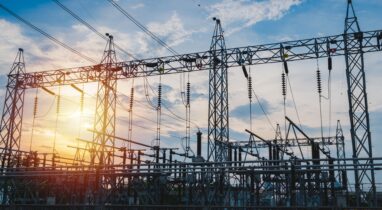In Spring 2022, Clean Prosperity initiated a policy-focused modelling project to explore pathways to achieving net-zero emissions across the Canadian economy by 2050. Working with Navius Research, we are conducting this multi-year effort to build on the work and findings of other Canadian and international net-zero studies. Our goal is to model the broader energy-system implications of a net-zero transformation across sectors, geographies, and technologies, and also examine the types of policies and infrastructure required to achieve these outcomes.
Our project objectives are to:
- Model the impact of present-day climate-policy scenarios to establish our current emissions trajectory and progress toward 2050 net-zero emissions;
- Model potential energy-system pathways for Canada to build further understanding of the challenges, opportunities, and trade-offs involved in achieving net-zero;
- Examine how various current and future policy configurations can lead to additional emission reductions and ultimately help Canada achieve net-zero; and,
- Identify the scale of effort needed to meet net-zero goals by comparing modelling outcomes with Canada’s existing infrastructure and practical resource availability through geospatial analysis.
Update #1: What progress are we on track to make by 2050?
In our first in a series of planned updates, we describe our modelling approach, review Canada’s anticipated emissions trajectory toward net-zero emissions based on modelling current climate policy, and introduce our five net-zero energy-system pathways. This phase of work analyzes existing federal climate policies (the Emissions Reduction Plan, or ERP) to 2050 compared to a rollback scenario*, and introduces our five net-zero pathways.
Overall we find that our current policy trajectory is projected to make good progress on emission reductions. However, this result is optimistic as we assume the timely and optimal execution of announced and legislated policy, and even so, Canada still falls significantly short of achieving its 2050 net-zero target.
Specific results include that:
- Modelling the ERP to 2030 shows an emission reduction of 31% compared to 2005 levels. This matches other independent estimates and is in line with the forecasts in the government’s own Emissions Reduction plan – but projects the Government will miss its 40 – 45% target.
- Extending the ERP analysis to 2050 shows Canada’s current set of policies does not align to net-zero. Based on a net-zero target of 50 Mt/yr by 2050, our current trajectory overshoots by +400 Mt/yr.
Our initial modelling of technical pathways to net-zero emissions** illustrates the breadth and depth of interventions required to achieve net-zero, and reinforces the urgency to begin planning and acting for 2050 today. Early results find that some cross-cutting measures across pathways are becoming evident, such as the role of electrification, energy storage and carbon dioxide removal.
Overall we conclude that climate policy planning for the longer term is required immediately, and is especially critical to reduce Canada’s contribution to global emissions accumulation over time.
Next Steps
Our ongoing work will focus on deepening the examination of our net-zero pathways, including exploring regional and sector-level aspects of the modelling to better understand the challenges, opportunities, and tradeoffs in achieving net-zero across Canada. We are currently embarking on a policy simulation exercise to explore how we can improve emissions outcomes and make further progress toward net-zero, building on elements of the U.S. Inflation Reduction Act. This work will also integrate the new ERP elements introduced in Canada’s Budget 2023.
Through the use of Geographic Information System (GIS) mapping, we are also assessing the scale of infrastructure deployment required to realize net-zero through evaluating Canada’s renewable energy, hydrogen, and carbon capture, storage and removal resource potential.
The work from pathway development, policy simulation and mapping exercise will be integrated to form subsequent modelling updates and our final project report.
Contact:
For more information on this project and our ongoing net-zero research, please contact us at research [at] cleanprosperity.ca.
Citation
Report Authors:
Melissa Felder and Anastasia Hervas, Clean Prosperity
Project Contributors:
Michael Bernstein and Jake Wadland, Clean Prosperity
Carlie Owen, Franziska Förg and Brianne Riehl, Navius Research
Dr. Chris Bataille, independent expert
Acknowledgements:
We wish to thank the following reviewers for their time and insights on draft versions. All material herein is the sole responsibility and opinion of the authors.
- Alison Cretney, Energy Futures Lab
- Allison Archer, Clean Prosperity
- Anna Kanduth, Canadian Climate Institute
- Dr. Chris Bataille, independent expert
- Chris Roney, Electric Power Research Institute (U.S.)
- Dr. Nidhi Santen, Electric Power Research Institute International — Canada
We wish to thank the following members of our Net-Zero Advisory Panel for their support.
- Alison Cretney, Energy Futures Lab
- Dr. Chris Bataille, independent expert
- Chris Roney, Electric Power Research Institute (U.S.)
- Dr. Erin Mayfield, Dartmouth University
- Jason Dion, Canadian Climate Institute
- Dr. Mark Jaccard, independent expert
- Dr. Nidhi Santen, Electric Power Research Institute International — Canada
*For this project, we use the Navius gTech and IESD models to simulate the impacts of two present-day, or baseline, policy scenarios on 2050 net-zero goals, as well as on interim emission targets for 2030:
- Emissions Reduction Plan (ERP) scenario: Legislated and announced federal and provincial climate policy as of spring 2022, updated to include selected policy announcements made since March 2022.
- Rollback (RBK) scenario: Legislated federal and provincial carbon pricing and regulatory policies as of November 2021. This does not include the federal Clean Fuel Regulations and maintains carbon pricing at $50/tonne. This scenario is considered a climate policy rollback scenario.
**We have also selected five pathways for Canada’s net-zero transition, principally defined by their use of different energy sources as follows: High Electrification, High Electrification with Renewables, Bioenergy, Hydrogen, and Fossil Fuels with Carbon Capture, Utilization and Storage. These pathways were developed to reflect a range of policy routes and technological areas of focus that can take Canada towards its net-zero objective. Each of these pathways is set to reach 50 megatonnes Mt of annual emissions by 2050 that can be removed by Land Use, Land Use Change, and Forestry (LULUCF), and thereby achieve net-zero emissions per year by mid-century.




